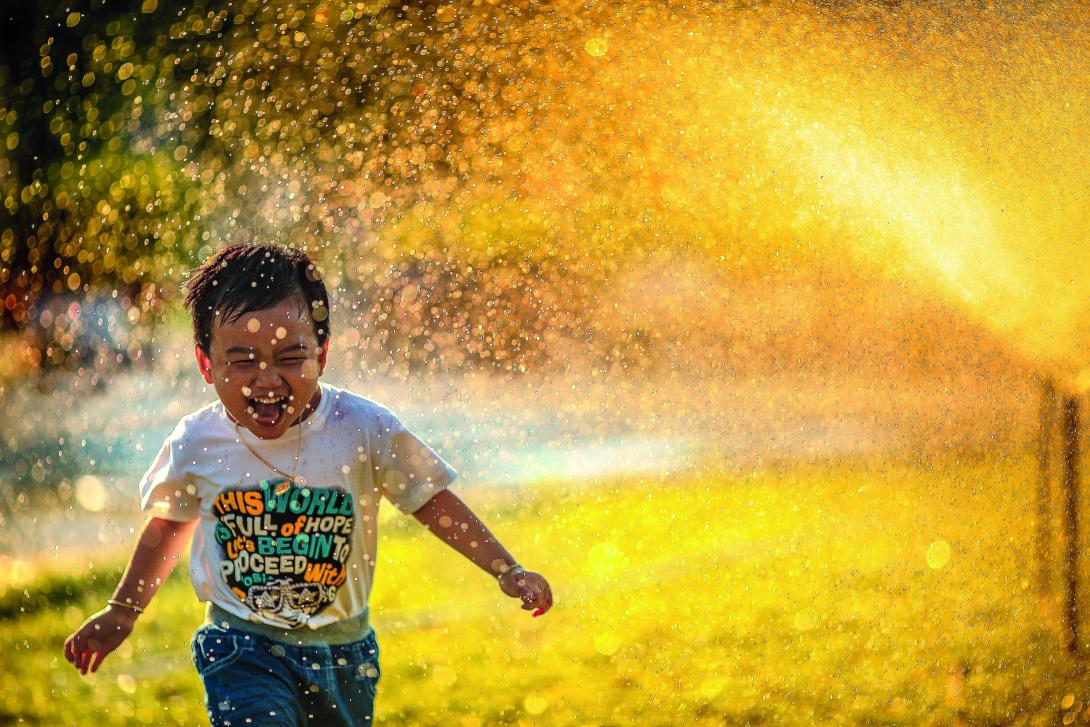
Photo by My Pham on Unsplash
“In winter, play with the snow; in summer, play with the sun!” wrote Turkish playwright Mehmet Murat Ildan. “Do not wait for something to come; everything is already here! In autumn, play with the leaves; in spring, play with the flowers! In summer, don’t wait for the winter; in winter, don’t wait for the summer! Everything is already here; in this present time you live in!”
I love that quote—it is a firm reminder that despite the promise of each coming season, we really must pause and connect with the present moment, in life and in play.
Those who have read any of my previous articles will know that I am always inspired by nature and the cycle of the seasons. There is simplicity in using what inspiration surrounds us, which allows our children to connect with earth, and gifts us a wonderful freedom of possibility and fortitude.
As I say this, I am mindful of the sense I have, that this summer seems to be full of promise. It promises to be the perfect opportunity to make up for the last two summers during lockdown.
It is my belief that we are all able to make some core memories with our families, whether we have a picnic in the local park, or go on an all-inclusive holiday to the Caribbean. It really doesn’t matter where we are—we can use the moments that we have been given to connect and nurture relationships with those around us.
How can we use summer to inspire our child’s play?
Let’s start with a brainstorm—what comes to mind when you think of summer? Is it sand, sea and sunshine? It sure is for me! Sometimes having a theme can really boost our creativity. There is also an added benefit that if your play is inspired by the season, then you can play outside and enjoy the weather or play indoors and take a sunbreak—the best of both worlds.
So, let’s take a look at three summery themes:
Sand
Sand is an excellent base for sensory play. It is incredibly tactile and mesmerizing to watch as it moves, but what can you do with it?
1. Mark-making: pour a tray of sand and pair it with a stick or chopstick and a small container of water. Show your child how to draw shapes in the sand and experiment with the texture by adding water.
2. Capacity: set up your tray in the same way as above, but this time pair with a few small cups, bowls and spoons. Try and guess how many spoonfuls of sand each container will need before reaching capacity.
Don’t overlook the obvious ways to play here either. Children will love to bury and discover “treasure” in the sand, even their own hands and feet!
If you’re playing indoors, put a tablecloth or towel under your play tray—don’t do it in the bath or sink, as sand can jam the pipes and is a nightmare to get out (speaking from sad experience)!
Sea
Water is another fantastic sensory base that is perfect for some clean messy fun! Either do this outside or in the bath, and play without worrying about spillages!
1. Sea scene: add some plastic sea creature toys or figures to your child’s bath and just a couple of drops of blue or green food coloring to give the water a tint. Throw in a few of their regular bath toys, and sit back and watch their storytelling unfurl.
2. Small-world play: Another fantastic way to jazz up some small world play is to dye some rice blue or green to make the sea. Do this by adding a blob of poster paint to some rice in a ziplock bag and mix before leaving to air dry. This rice can always be paired with expired polenta to create a beach scene.
Don’t forget that the sea is multisensory; you can hear, taste, smell and feel it! Could you maybe incorporate some sea sounds into your play?
YouTube has plenty of free sea soundscape videos that you can stream in the background. The sound of the waves crashing on the shore is incredibly soporific, so this would be a perfect addition to some calming, pre-bedtime play for those more exciting days.
Sunshine
We all love a bit of sunshine, don’t we? It’s proven to boost our feel-good hormones, so why not extend this love to our children’s play.
1. Paint a paper plate yellow. Once dry, you can add facial features with a black pen. Around the outer edge write the alphabet in lower case letters. Using wooden clothes pegs, write an uppercase letter on each peg until you have a full set. Ask your child to match the upper and lowercase letters by pegging them onto the plate. The pegs then look like the rays of the sun!
You could vary this to be answers to times tables or French and English words—whatever it is that your child is working on in school now. Play has been proven to be the best way to help children learn and retain new information.
2. Sundial: If you have a full day at home and some outdoor space, why not set up your very own sundial. You’ll need to pop out each hour with some chalk to mark where the shadow of your chosen object falls. It’s a good and fun science experiment for all ages.
I hope that you all have a lovely summer, but please don’t feel like play should be another thing to add to your seemingly endless to-do list and “parent load.”
I leave you with this Brooke Hampton quotation, which perfectly sums up how simple play can be: “I am happy out here. Dirty feet, messy hair and wild water on my skin. Out here with the wild things; this is where I belong.”
First published in New City London












